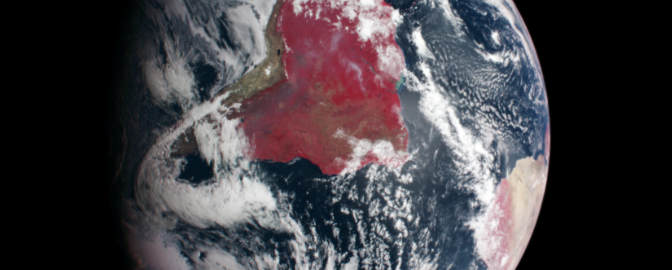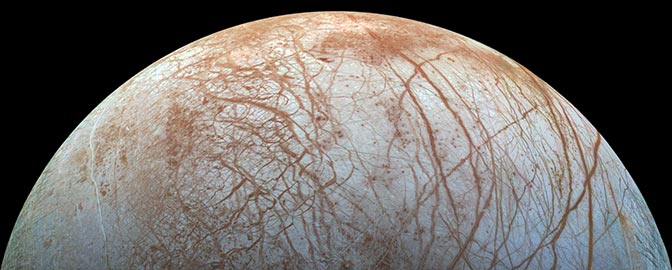Magnetospheric Multiscale Mission (MMS)

Mission Overview
The Magnetospheric Multiscale (MMS) mission is a Solar Terrestrial Probes Program mission within NASA's Heliophysics Division. The MMS mission, consisting of four identically instrumented spacecraft, will use Earth's magnetosphere as a laboratory to study magnetic reconnection.
Each spacecraft has an octagonal shape, approximately 3.5 m wide and 1.2 m high. The satellites spin at 3 rpm during science operations. Low shock, commercial separation systems similar to the separation system used by the launch vehicle will separate the top three observatories in the launch stack. There are eight deployable booms per satellite: four 60-m wire booms in the spin plane for electric field sensors, two 12.5-m booms in the axial plane for electric field sensors, and two 5-m booms in the spin plane for magnetometers. The aluminum structure has a modular design, consisting of a propulsion assembly, separation system/thrust tube, instrument deck, and spacecraft deck.
The attitude control system keeps the spacecraft to within +/-0.5 degrees of the desired orientation during science operations and implements on-board closed loop maneuver control. Star sensors and sun sensors provide attitude sensor data, and accelerometers provide acceleration and delta-V data. Thrusters are used as actuators. The propulsion system is a mono-propellant blowdown system with 12 thrusters sized to achieve both small formation maintenance maneuvers and large apogee raise maneuvers. Approximately 360 kg of propellant will be contained in four titanium tanks per spacecraft.
The electrical power system is a direct energy transfer system employing a battery. Power to the spacecraft is supplied from eight identical body-mounted solar array panels that are electrostatically and magnetically clean. The battery is sized to provide power during the four-hour eclipses. The thermal design is passive using thermostatically controlled heaters.
Ground communications occur over a single S-band frequency for uplink to all four spacecraft and a single S-band frequency for downlink from all four spacecraft. Real-time coverage of all critical commands, including post launch separation and all maneuvers, will be accomplished through TDRSS.
The spacecraft bus avionics performs command and telemetry processing, timing distribution, solar array regulation, battery charge management, and thruster control. Orbit determination is performed on-board using weak signal GPS processing. Each satellite, including instruments, fuel, and margin has a mass of approximately 1,250 kg. The power budget at end of life with instruments and margin is approximately 318 W.
Each spacecraft will carry identical instrument suites of plasma analyzers, energetic particle detectors, magnetometers, and electric field instruments as well as a device to prevent spacecraft charging from interfering with the highly sensitive measurements required in and around the diffusion regions. The plasma and fields instruments will measure the ion and electron distributions and the electric and magnetic fields with unprecedentedly high (millisecond) time resolution and accuracy. These measurements will enable to MMS to locate and identify the small (1-10 km) and rapidly moving (10-100 km/s) diffusion regions, to determine their size and structure, and to discover the mechanism(s) by which the frozen-in condition is broken, the ions and electrons become demagnetized, and the magnetic field is re-configured.
Note: Mission information is from NASA's Space Science Data Coordinated Archive.
Spending Summary
| FY 2024 Total | By Jul of FY 2024 | By Jul of FY 2025 | Change from FY 2024 | |
|---|---|---|---|---|
| Obligations | $11.2M | $11.2M | $9.6M | $-1.6M |
| Outlays | $13.0M | $11.0M | $12.0M | +$1.0M |
Comparing Contract Obligations

Running sum of 1 award. Shows cumulative actual spending by fiscal period. Period 2 represents combined Oct-Nov data (this is a reporting quirk of USASpending.gov). Negative values indicate adjustments or credits. Data last updated: 2025-09-18
Download OptionsWhat are obligations? Obligations represent NASA's legal commitments to spend money — contracts signed, grants awarded, and purchase orders issued. Unlike outlays (actual payments), obligations show when spending decisions are made.
Reading this chart: The chart displays cumulative obligations throughout the fiscal year (October through September). The solid line shows the current fiscal year's running total, while the dotted line (when available) shows the previous year for comparison. This allows you to see spending patterns and track whether funding is ahead or behind the prior year's pace.
Comparing Contract Outlays

Running sum of 1 award. Shows cumulative actual spending by fiscal period. Period 2 represents combined Oct-Nov data (this is a reporting quirk of USASpending.gov). Negative values indicate adjustments or credits. Data last updated: 2025-09-18
Download OptionsWhat are outlays? Outlays represent actual cash payments made by NASA. While obligations show when spending decisions are made, outlays show when money actually leaves the treasury.
Reading this chart: The chart displays cumulative outlays throughout the fiscal year (October through September). The solid line shows the current fiscal year's actual spending, while the dotted line (when available) shows the previous year for comparison. This reveals the actual cash flow timing and whether spending is keeping pace with the prior year.


 Explore Worlds
Explore Worlds Find Life
Find Life Defend Earth
Defend Earth

